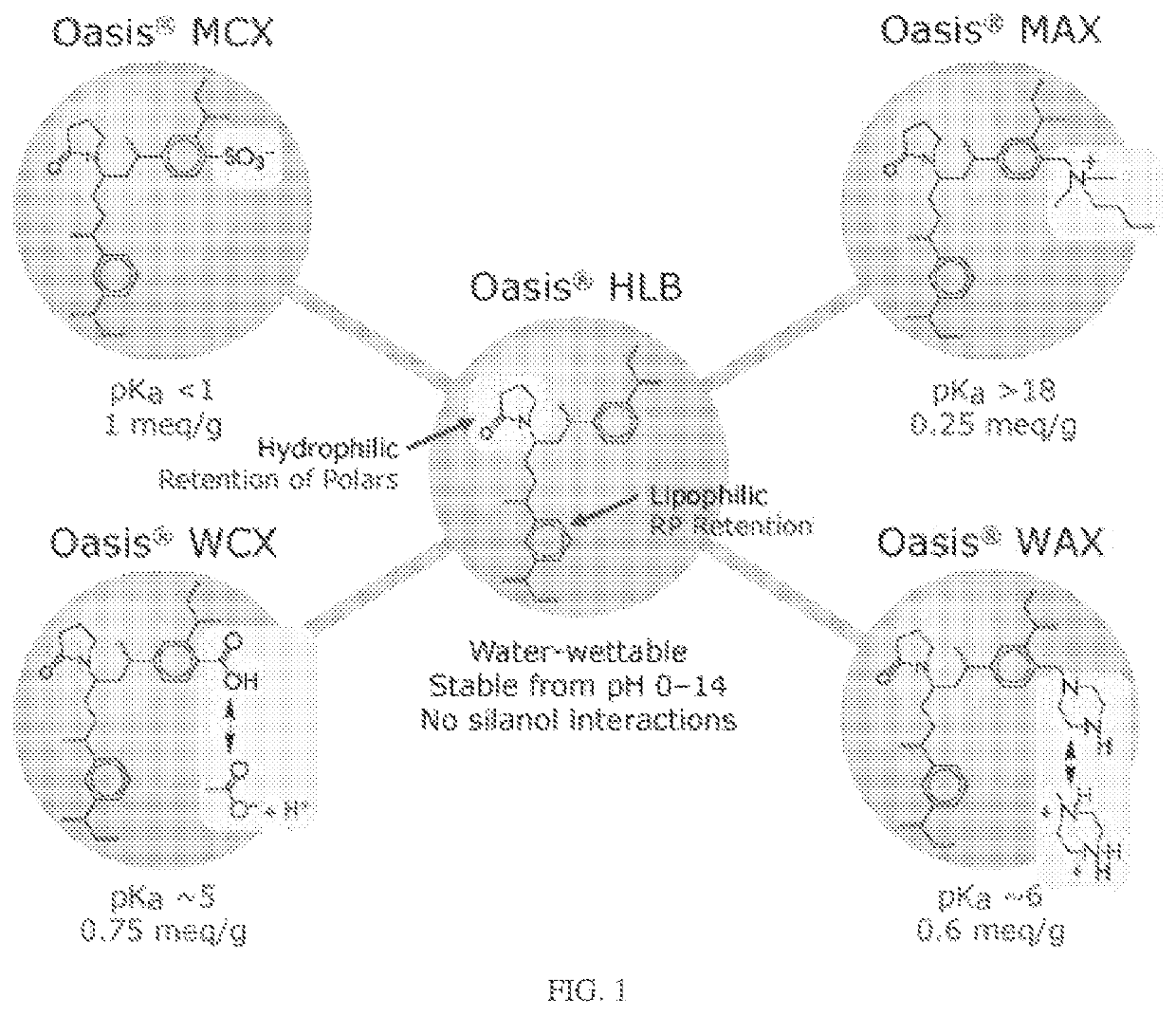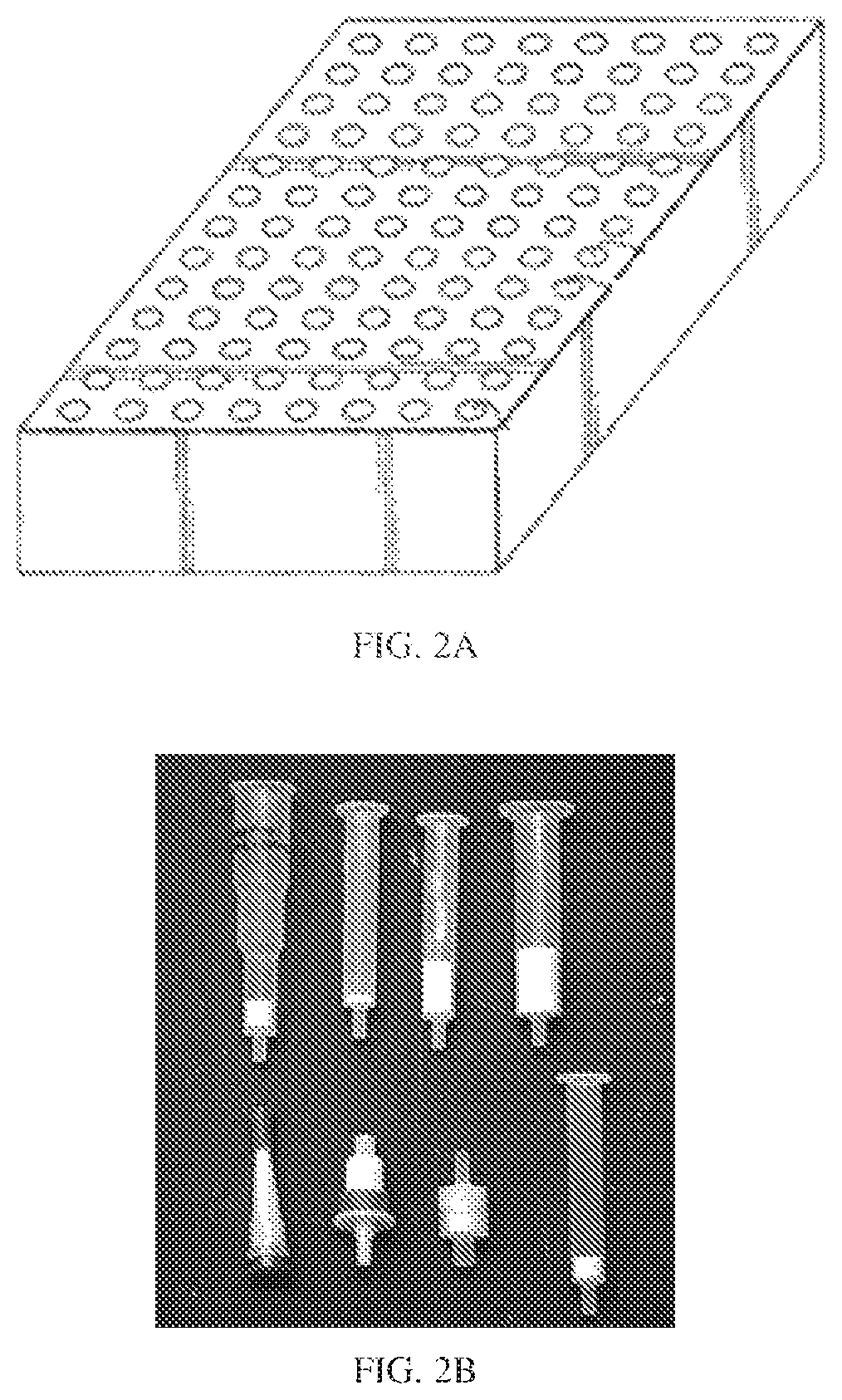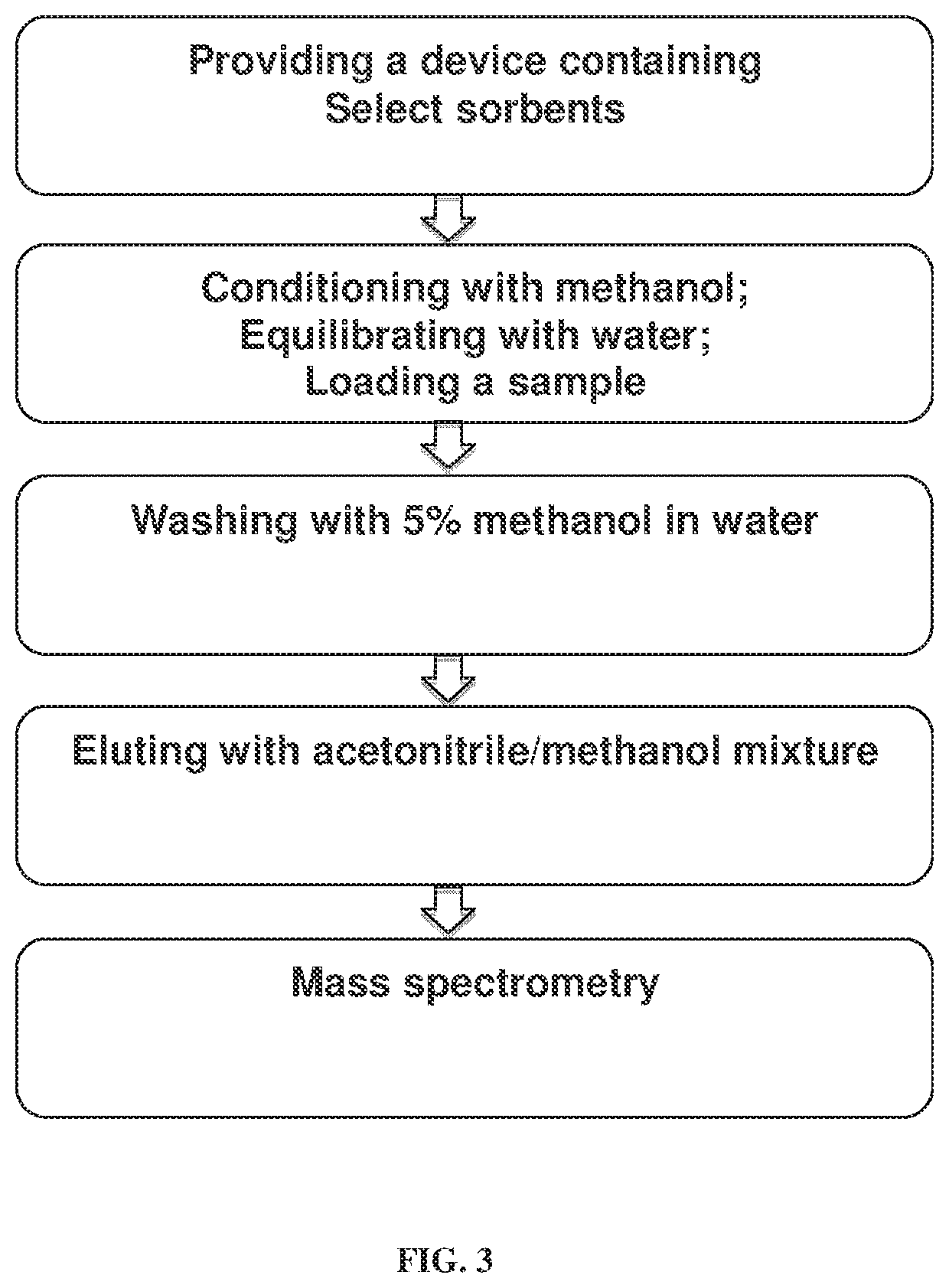Device for solid phase extraction and method for use thereof
a solid phase extraction and solid phase technology, applied in the field of solid phase extraction devices, can solve the problems of inability to develop a single solid phase extraction method for all possible analytes, produce irreproducible and/or etc., to achieve the effect of reducing or eliminating matrix effects, preventing high sensitivity, and inaccurate quantitation of analytes
- Summary
- Abstract
- Description
- Claims
- Application Information
AI Technical Summary
Benefits of technology
Problems solved by technology
Method used
Image
Examples
example 1
μElution Plate with the Layered Invention Sorbent Combination
[0171]A μElution plate was prepared in which each well contained 2 mg of OSTRO® sorbent in the bottom and 1 mg of 30 μm OASIS® HLB layered on top. This inventive sorbent plate was compared to a commercially available plate of the same format from Waters Corporation (pn 186001828BA containing 2 mg of HLB).
[0172]A 400 μL aliquot of diluted human plasma (1:1 with 4% H3PO4) was loaded on the μElution plate containing the inventive sorbent combination or HLB. The loaded samples were washed using 400 μL of 5% methanol in water, and eluted under the optimized conditions for analyte recovery and phospholipid removal for the aforementioned sorbent combination by using a mixture of acetonitrile:methanol (90:10) as the elution solution.
[0173]As shown in the Tablet below average recoveries and standard deviations are comparable to the commercially available plate containing only OASIS® HLB. The amount of phospholipids in the extracted...
example 2
Inventive Sorbent Comparisons in 1 cc Devices
[0176]This example demonstrates that the layered version of the invention provides comparable recoveries to an HLB only 1 cc cartridge whether the layered selected sorbents are separated by a frit or not. However, the invention 1 cc cartridges that are separated by a frit, as commonly done with multisorbent devices shows substantially higher relative standard deviations (RSD) compared to the other configurations.
[0177]Devices[0178]Three device formats are prepared using 1 cc cartridges. Each format is configured as follows.[0179]Device 1: (top) a frit-OASIS® HLB in an amount of about 10 mg-frit (bottom)[0180]Device 2: (top) a frit-OASIS® HLB in an amount of about 10 mg-OSTRO® in an amount of about 10 mg-frit (bottom)[0181]Device 3: (top) a frit-OASIS® HLB in an amount of about 10 mg—(frit)—OSTRO® in an amount of about 10 mg-frit (bottom)
Procedure
[0182]Solid phase extraction was performed with each device of 1 cc cartridge. The sorbents in...
example 3
Method for Determining MS / MS Matrix Effects
[0192]One method for determining potential matrix effects utilizes post-column infusion of eluates derived from proposed SPE methods using blank (unspiked) plasma (see picture below). A clean standard (1), containing the analytes of interest, is injected on the column. A tee of the infused eluates combines with the fluid from the column outlet. The combined flow is then directed into the MS for analysis.
[0193]The MS detector analyzes each analyte, as it elutes from the column, in the presence of the blank plasma eluates from the various sample preparation methods to be compared. This method shows matrix effects differences attributed to matrix substances remaining in the eluate. The MS response for each of the analytes while infusing matrix-free elution solutions is compared to the MS response for each of the analytes while infusing eluates from processing blank plasma by the cited method. This approach to accessing matrix effects in known ...
PUM
| Property | Measurement | Unit |
|---|---|---|
| diameter | aaaaa | aaaaa |
| density | aaaaa | aaaaa |
| density | aaaaa | aaaaa |
Abstract
Description
Claims
Application Information
 Login to View More
Login to View More - R&D
- Intellectual Property
- Life Sciences
- Materials
- Tech Scout
- Unparalleled Data Quality
- Higher Quality Content
- 60% Fewer Hallucinations
Browse by: Latest US Patents, China's latest patents, Technical Efficacy Thesaurus, Application Domain, Technology Topic, Popular Technical Reports.
© 2025 PatSnap. All rights reserved.Legal|Privacy policy|Modern Slavery Act Transparency Statement|Sitemap|About US| Contact US: help@patsnap.com



